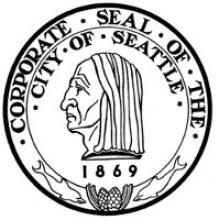
Fast, affordable Internet access for all.

In 2005, Seattle started offering free Wi-Fi to several neighborhoods, hoping to increase usage among businesses, residents, and passers-by. While the effort was hailed by some, and criticized by others, it was an experiment in community broadband. An experiment that ended on April 29th.
The City still considered the free Wi-Fi a pilot project, even though it had been in operation since 2005. Areas served were the University District and Columbia City neighborhoods, and four downtown parks. There will still be free Wi-Fi in public libraries and in a few hotspots around town as well as in some city facilities, including City Hall and the Seattle Center.
The theory was that municipal WiFi was a workable and cheaper way to get more people online. But Wi-Fi is only cheaper in the short run -- something fiber critics tend to ignore. As Seattle has found, most of the network has to be replaced every 5-7 years.
Technical issues and geography also create unique problems for citywide Wi-Fi. Where to put transmitters, interference from buildings, foilage and water, are all barriers to offering a service that is worthwhile to potential users. David Keyes, Chief Information Technology Officer for the City of Seattle noted these problems where there have been complaints of spotty and unreliable reception. Keyes talked to Brian Heaton of Government Technology:
Seattle would be open to someone taking over the system, but Keyes felt that anyone coming in to do a fresh deployment of Wi-Fi might install it a little differently in regard to wireless access point placement. The actual equipment would also need to be replaced.
Seattle's plan for municipal WiFi has been debated from the beginning. In 2008, Government Technology reporter, Chandler Harris, spoke with Bill Schrier, who was Seattle's Chief Technology Officer at the time. Schrier was also one of the harshest critics of the plan to spread Wi-Fi all over Seattle, saying:
"We found significant problems with the technology," Schrier said. "First of all, if you put up a Wi-Fi point, it will work outdoors, but radio waves don't go through walls. If you put the Wi-Fi points down low, it reaches to the back of restaurants and buildings, but you don't get a wide coverage, but if you put the Wi-Fi points up high, you get a broader footprint, but don't get the interior coverage you want."
The study also found users were monopolizing bandwidth by sending spam and participating in Internet gaming, while other users attempted to hack into the system. The study also found numerous benefits to free citywide Wi-Fi, including increased revenue for businesses situated in the service area, improved access to users who had no other means of access, a reduction of road congestion from users who claimed Seattle Wi-Fi helped reduce driving time, and an increase in Seattle.gov services.

The Wi-Fi in Seattle website credits the wireless network with aiding in the revitalization of the neighborhoods that were served by the service. The announcement lists factors leading to the decision as:
- The existing equipment has passed its end-of-life and can no longer be maintained effectively.
- The cost to buy and install new commercial-grade equipment and to support continuing Wi-Fi service and support are high at a time when the economy has forced the city to make budget cuts.
- An increasing number of people have Internet access with their mobile cell plans (“smartphones “), and there is greater availability of Wi-Fi in neighborhood cafes and businesses that provide alternatives to a City-managed Wi-Fi program.
More concerning to us is Seattle's failure to expand its large wired footprint to better benefit local businesses and residents. Thus far, it seems the only beneficiary of its new policies to lease access to private companies will be Comcast -- strengthening its grip over the city's telecom needs. Mayor McGin once campaigned on smart public broadband investments, but his vision appears to have blocked by the City Council.
At present, Seattle is stuck with Comcast and CenturyLink whereas some of its suburban neighbors have FTTH, largely due to Verizon's FiOS. Who is planning to construct a 21st century network in that period? No one, apparently. Perhaps Seattle thinks it can still be competitive with only last-generation DSL and cable but time will tell.
Photo used under creative commons license from flickr.
